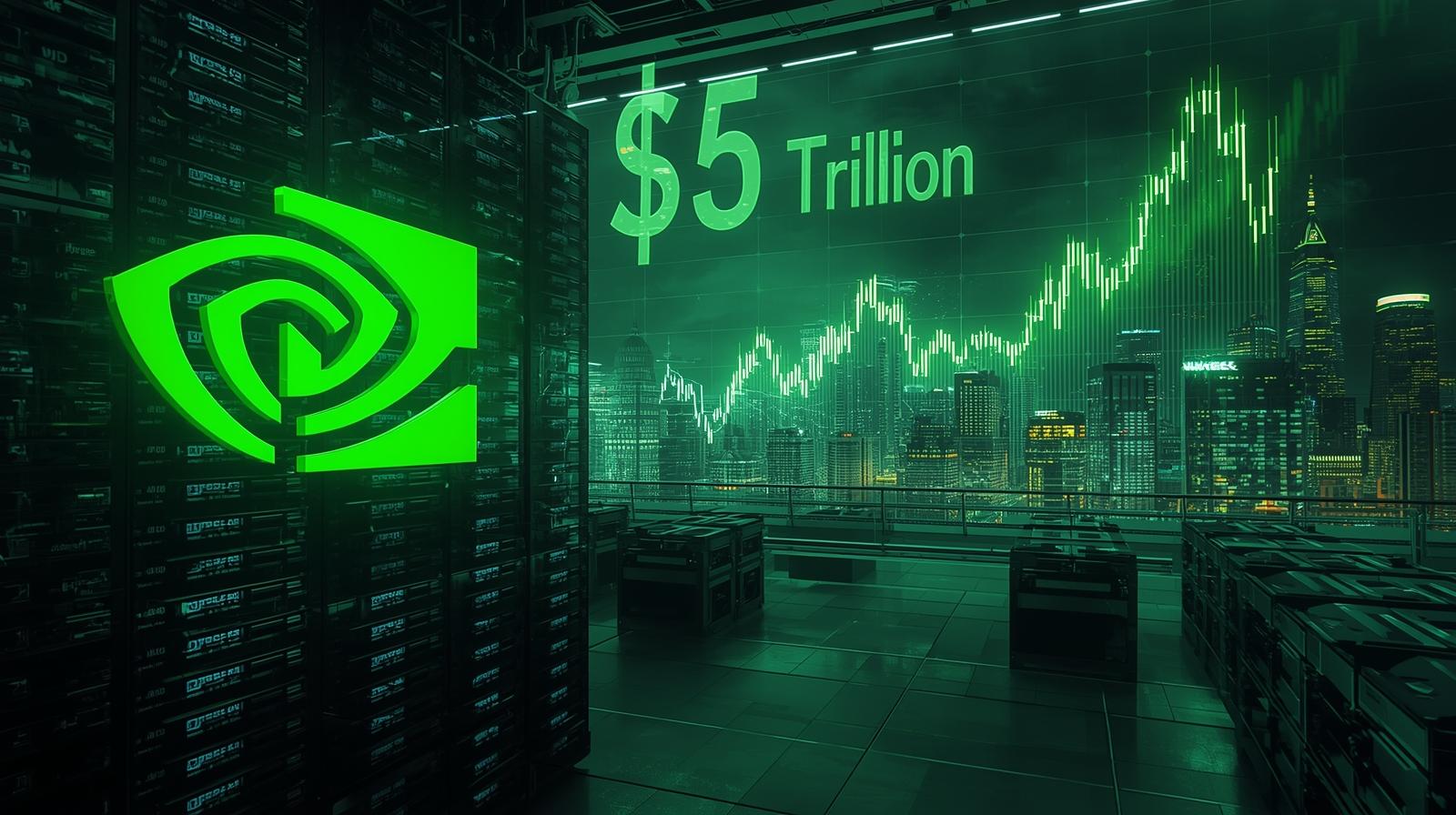Introduction
Every once in a while, a company’s earnings call becomes more than just numbers—it turns into a cultural event. That’s exactly what happens with Nvidia these days. When Wall Street talks Nvidia, they’re not just discussing another chipmaker; they’re really asking, “Where’s the future of AI heading?” And now, with whispers about Nvidia possibly racing toward a $5 trillion market cap, the stakes feel higher than ever.
The question is simple but tricky: Can Nvidia keep up this insane momentum, or is the hype running faster than reality? Let’s break it down together.

Why Nvidia’s Earnings Are Basically an AI Weather Report
You know how some people check the 8171 web portal for payment tracking or CNIC confirmation because it tells them where things stand? Well, Nvidia’s earnings are kind of like that for the tech world.
If Nvidia smashes expectations, the market interprets it as “AI demand is still exploding.” If the numbers disappoint, suddenly analysts start worrying that the AI boom is cooling off.
So what happens is, Nvidia’s report isn’t just about one company’s revenue—it sets the tone for the entire AI industry. Microsoft, Google, Amazon, and even smaller AI startups all depend heavily on Nvidia’s GPUs to train and run large models. In short, when Nvidia sneezes, the whole AI ecosystem catches a cold.
What Investors Should Watch This Time
There are a few key areas to keep an eye on when Nvidia reports. Let’s go through them without drowning in jargon.
- Data Center Revenue
This is the crown jewel. AI servers are built on Nvidia chips, so if this number is strong, it means enterprises are still opening their wallets big time. - Gaming Division
Nvidia started with gaming GPUs, and while AI is the hot story, gaming is still a steady earner. Weakness here could hint at consumer spending issues. - Supply Chain & Inventory Updates
If Nvidia struggles to meet demand, it slows growth. Think of it like waiting for online confirmation of a payment—delays cause frustration and uncertainty. - Guidance for 2025
Numbers are good, but Wall Street cares more about the future. If Nvidia signals strong demand ahead, it will fuel more investor optimism.
Breaking Down the $5 Trillion Dream
Let’s be honest: $5 trillion sounds insane, right? Only Apple and Microsoft are anywhere close to those numbers. But Nvidia isn’t a regular stock anymore—it’s the face of the AI revolution.
For Nvidia to realistically push toward $5T, a few conditions must hold up:
- AI Demand Must Stay Red-Hot
Cloud providers like Amazon Web Services, Microsoft Azure, and Google Cloud need to keep buying GPUs like candy. - Competition Can’t Eat Its Lunch
AMD and Intel are trying hard to catch up. If they gain ground, Nvidia’s dominance gets threatened. - Margins Have to Stay Strong
Investors love Nvidia partly because of its fat profit margins. If pricing power slips, the story weakens.
Here’s a simple way to visualize it:
| Factor | Impact on $5T Goal |
|---|---|
| Data Center Growth | Massive growth = closer to $5T |
| Competition from AMD/Intel | High competition = tougher climb |
| AI Hype & Adoption | Sustained hype = more momentum |
| Supply Chain Stability | Smooth supply = faster growth |
The Bigger AI Picture
The hype around Nvidia isn’t just about gaming or chips—it’s about being the backbone of the AI economy. Every time a chatbot like ChatGPT gets smarter, or an autonomous car trains its neural net, there’s a good chance Nvidia silicon is behind it.
The problem is, hype cycles don’t last forever. Investors remember the dot-com bubble, the crypto bubble, and countless “next big things” that crashed. But the good news is, unlike those fads, AI has deep enterprise adoption. Banks, hospitals, governments, and even educational platforms are investing in AI infrastructure. That gives Nvidia’s story more weight.
How Nvidia Earnings Tie Into Broader Markets
If Nvidia’s results beat expectations, you’ll probably see a surge in AI-related stocks. ETFs linked to semiconductors or cloud computing might get a boost too. On the flip side, if numbers disappoint, the whole sector could wobble.
It’s a bit like payment tracking: if your money arrives on time, you feel confident; if there’s a delay, you get anxious. Nvidia is that “confirmation” for the AI boom.
Risks People Often Overlook
Now, it’s easy to get swept up in Nvidia hype. But let’s not forget a few risks that could derail things:
- Geopolitical Tensions: Restrictions on chip exports to China could limit revenue growth.
- Supply Constraints: Global chip shortages could bottleneck production.
- AI Plateau: If companies find AI less profitable than expected, demand might slow down.
- Valuation Risks: At some point, the stock price may be running ahead of actual earnings.
Market Sentiment: Excitement with a Dash of Caution
Right now, the vibe is mostly bullish. Analysts on Bloomberg and financial forums are still excited. Some even argue Nvidia could pass Apple in market cap if AI momentum continues.
But cautious voices say the stock is “priced for perfection.” Meaning if Nvidia even slightly disappoints, the drop could be sharp. So yeah, there’s excitement, but also nerves.
Final Words
So, can Nvidia really climb toward a $5 trillion market cap? Honestly, it’s possible. The company has the dominance, the demand, and the investor enthusiasm. But it’s not a straight line up. Nvidia will need to keep delivering quarter after quarter, while fending off competition and managing supply chains.
In fact, the smarter approach is to see Nvidia not just as a stock, but as a signal for the future of AI itself. Just like people rely on the 8171 latest method for quick payment updates, traders and tech enthusiasts will keep refreshing their screens for Nvidia’s latest earnings confirmation.
Whether it hits $5T or not, Nvidia is shaping the next decade of technology—and that’s worth paying attention to.
FAQs
1. Why do Nvidia’s earnings matter so much?
Because Nvidia powers most AI infrastructure, its results impact the entire tech sector.
2. Could Nvidia really reach a $5 trillion market cap?
Yes, but it depends on sustained AI demand, limited competition, and strong profit margins.
3. What’s the most important number in Nvidia’s earnings?
Data center revenue—it’s the clearest indicator of AI demand.
4. Is Nvidia’s valuation too high right now?
Some analysts say yes, but others argue it’s justified by explosive AI growth.
5. How do Nvidia’s results affect smaller AI companies?
Most startups rely on Nvidia GPUs, so its pricing and supply decisions directly impact them.

Leave a Reply